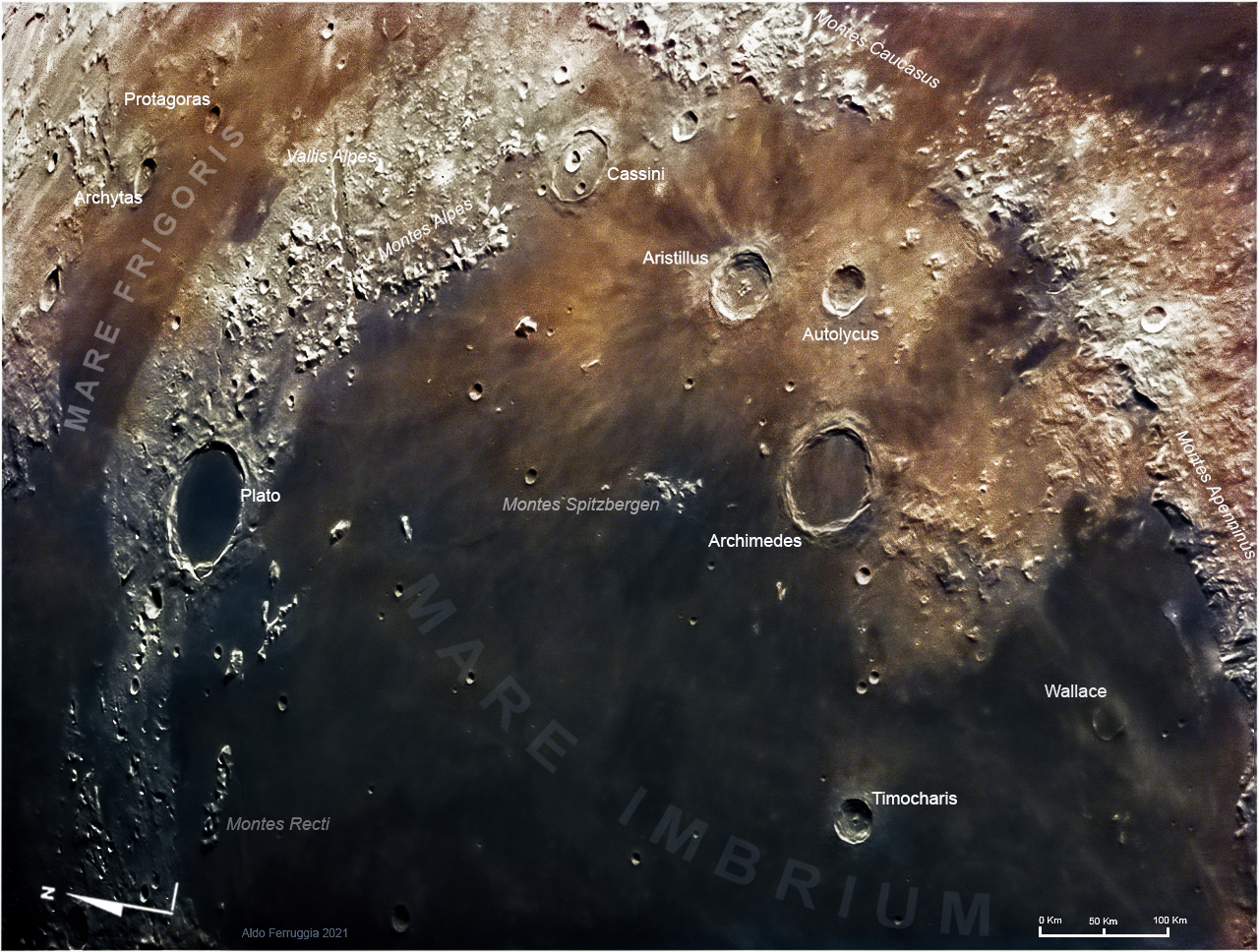Autolycus (crater) on:
[Wikipedia]
[Google]
[Amazon]
 Autolycus is a
Autolycus is a
 Autolycus is a
Autolycus is a lunar
Lunar most commonly means "of or relating to the Moon".
Lunar may also refer to:
Arts and entertainment
* ''Lunar'' (series), a series of video games
* "Lunar" (song), by David Guetta
* "Lunar", a song by Priestess from the 2009 album ''Prior t ...
impact crater
An impact crater is a circular depression in the surface of a solid astronomical object formed by the hypervelocity impact of a smaller object. In contrast to volcanic craters, which result from explosion or internal collapse, impact craters ...
that is located in the southeast part of Mare Imbrium
Mare Imbrium (Latin ''imbrium'', the "Sea of Showers" or "Sea of Rains", "Sea of Tears") is a vast lava plain within the Imbrium Basin on the Moon and is one of the larger craters in the Solar System. The Imbrium Basin formed from the colli ...
. The crater is named after the ancient Greek astronomer Autolycus of Pitane
Autolycus of Pitane ( el, Αὐτόλυκος ὁ Πιταναῖος; c. 360 – c. 290 BC) was a Greek astronomer, mathematician, and geographer. The lunar crater Autolycus was named in his honour.
Life and work
Autolycus was born in Pitane, ...
. West of the formation is Archimedes
Archimedes of Syracuse (;; ) was a Greek mathematician, physicist, engineer, astronomer, and inventor from the ancient city of Syracuse in Sicily. Although few details of his life are known, he is regarded as one of the leading scientists ...
, a formation more than double the size of Autolycus. Just to the north is Aristillus
Aristyllus ( el, Ἀρίστυλλος; fl. c. 261 BC) was a Greek astronomer, presumably of the school of Timocharis (c. 300 BC). He was among the earliest meridian-astronomy observers. Six of his stellar declinations are preserved at ...
, and the outer ramparts of these two craters overlap in the intermediate stretch of the lunar mare
The lunar maria (; singular: mare ) are large, dark, basaltic plains on Earth's Moon, formed by ancient asteroid impacts on the far side on the Moon that triggered volcanic activity on the opposite (near) side. They were dubbed , Latin for 'seas' ...
.
Description
The rim of Autolycus is somewhat irregular, although generally circular overall. It has a small outer rampart and an irregular interior with no central peak. It possesses a lightray system
A ray system comprises radial streaks of fine '' ejecta'' thrown out during the formation of an impact crater, looking somewhat like many thin spokes coming from the hub of a wheel. The rays may extend for lengths up to several times the diameter ...
that extends for a distance of over 400 kilometers. Due to its rays, Autolycus is mapped as part of the Copernican System. Some of the ray material appears to overlay the flooded floor of Archimedes, and thus Autolycus is older than Archimedes. Aristillus (to the north), however, has rays that overlay both Autolycus and Archimedes, and thus it is the youngest of the three craters.
The first man-made impact upon the Moon was when the Luna 2
''Luna 2'' ( rus, Луна 2}), originally named the Second Soviet Cosmic Rocket and nicknamed Lunik 2 in contemporaneous media, was the sixth of the Soviet Union's Luna programme spacecraft launched to the Moon, E-1 No.7. It was the first spac ...
probe crash-landed just to the west-southwest of the crater rim on September 13, 1959, according to the claim of one Hungarian astronomer who claimed to see an explosion of dust.
Satellite craters
By convention these features are identified on lunar maps by placing the letter on the side of the crater midpoint that is closest to Autolycus.Notes
References
* * * * * * * * * * * *External links
* {{Craters on the Moon: A–B Impact craters on the Moon Mare Imbrium